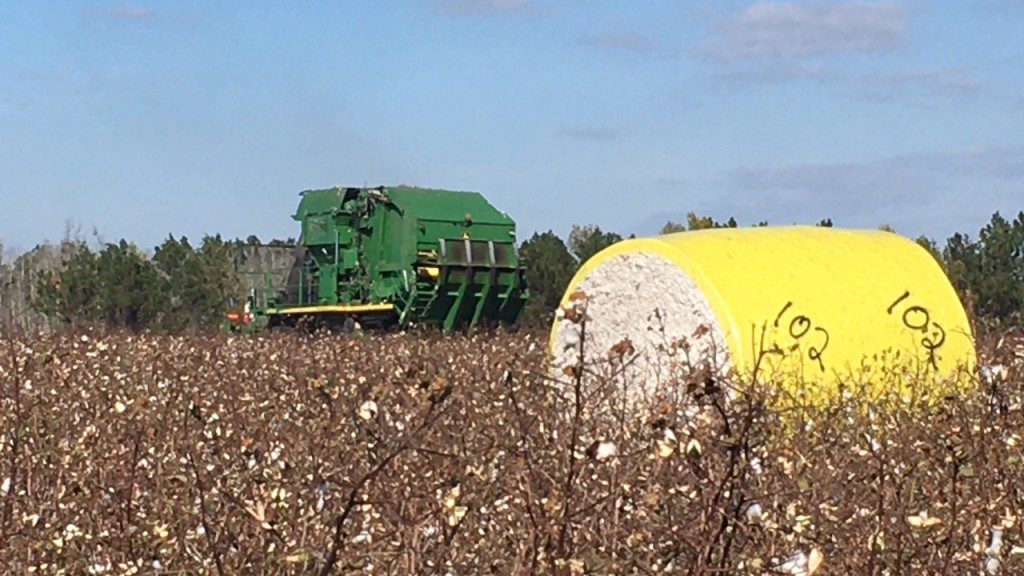Weed Resistance
-
Obviously with our dicamba dilemma, Liberty will be more important this year so let’s discuss how to maximize its activity. Rate selection is of course a critical element. The most economical approach remains getting to the field when the largest Palmer amaranth is < 3 inches where the 32 oz/A rate of the standard 2.34…
-
Pam Knox mentioned in her blog this past week the historic snowstorm from a couple weeks ago. NOAA’s Climate blog has now posted a story describing the recent snowstorm in southern parts of our region that shows some interesting maps about the coldest temperature and where snowfall records were set. It also relates the weather to the…
-
It has been another interesting week in Colquitt County agriculture. Topics this week include soil temperatures, corn weed control, cotton burndown. The corn crop ranges from just to planted to V6. The wheat crop is in the grain fill stage of development. Cotton growers are trying to burn down fields before planting. Peanuts: According to…
-
Cutleaf eveningprimrose and wild radish have traditionally been troublesome weeds to manage in reduced-till fields. The most effective and economical option for controlling primrose and radish is an application of 2,4-D alone or mixed with any Roundup mixture (such as Roundup + Valor) at least 30 days before planting. For primrose, 2,4-D at 12 oz/A…
-
Below are a few words from Dr. Eric Prostko, UGA Weed Sciencist, on the subjects of ryegrass control and the peanut rotation change to the Reviton herbicide label. A few things you might be interested in: 1) Lately, I have received a few questions about controlling Italian/annual ryegrass in preplant burndown situations. Assuming resistance is…
-
Cotton: The cotton crop ranges from the 5th week of bloom to defoliated. I have seen a lot of potash and other fertility issues in fields as the crop reaches its end. Growers need to pay attention to these spots and evaluate causes by looking at soil or nematode samples. According to Dr. Camp Hand, UGA…
-
Another exciting week in Colquitt County agriculture. The 2023 Sunbelt Ag Expo Field Day is scheduled for July 20, and farmers are invited to join us to learn practical information from the region’s top agricultural scientists about the newest technologies that farmers can use to improve their operations. The Sunbelt team looks forward to welcoming…
-
Growers are trying to finish planting their cotton and peanut crops. The corn crop ranges from V10 to early pollination, and the peanut crop ranges from just planted to about 40 days old. The weather has not been optimal for herbicide applications to cotton and peanuts. Drier weather is in the immediate forecast. The cooler…
Posted in: Corn, Cotton, Entolomogy, Hay & Forages, Peanuts, Plant Pathology, weather, Weed Managment, Weed Resistance -
In this issue: Insect and disease situation in cotton and peanuts, post emerge herbicide applications in cotton and peanut, Southern rust situation in corn, Ascochyta (wet weather blight), TSWV, sore shin, and information from Dr. Eric Prostko. He educates growers about soil-applied glyphosate and peanuts. The weather has not cooperated with wheat producers this past week as…
-
Below are a few observations from Dr. Eric Prostko’s corn research plots this week. Dr. Prostko is the Extension Weed Specialist with corn responsibilities. 2) Question #1: Why do I have Prowl H20 3.8SC (pendimethalin) mixed with everything in these treatments? Texas panicum/buffalograss/bullgrass is one of the most common annual grass weeds in Georgia field…
